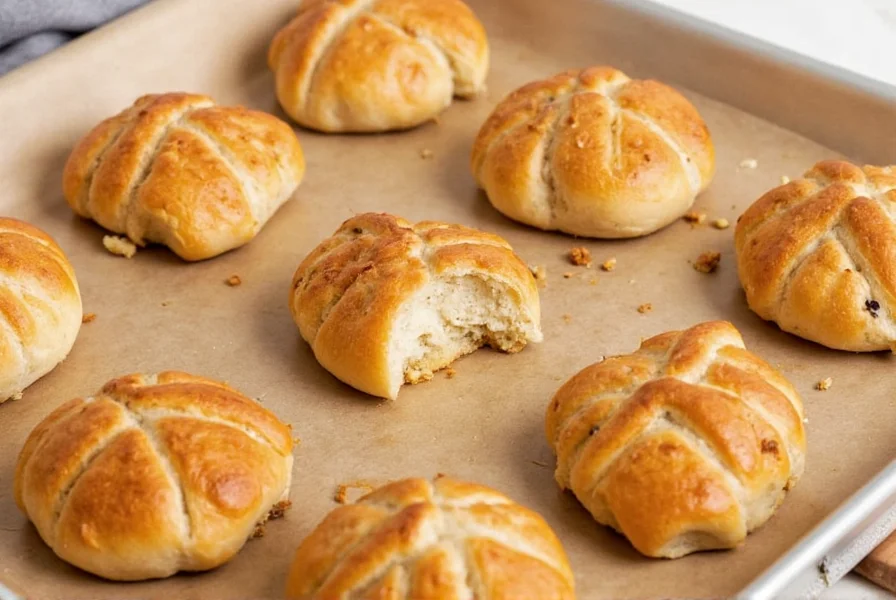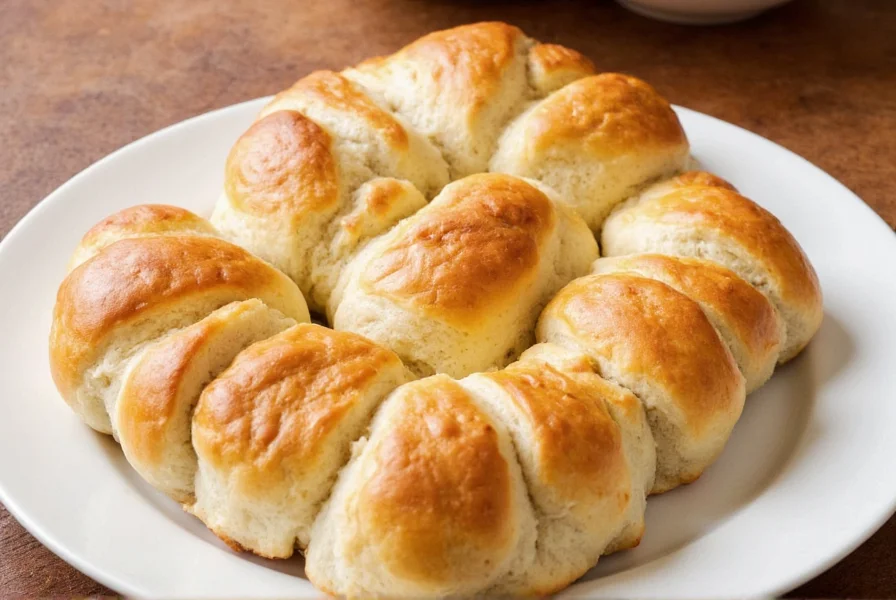Nothing compares to the warm, citrusy aroma of freshly baked cardamom buns filling your kitchen. These beloved Scandinavian pastries, known as kardemummabullar in Sweden and kardemommebolle in Norway, have been a staple of Nordic coffee culture for generations. The secret to authentic cardamom buns lies in using freshly ground cardamom pods rather than pre-ground spice, which delivers a brighter, more complex flavor profile that transforms ordinary sweet rolls into something extraordinary.
The Cultural Significance of Cardamom Buns
Cardamom arrived in Scandinavia through ancient spice trade routes, becoming particularly popular in Sweden during the 16th century. Unlike many spices that were reserved for special occasions, cardamom became integrated into everyday baking traditions. The Swedish concept of fika—a daily coffee break with pastries—often features cardamom buns as the centerpiece. In Norway, these buns are traditionally served on special occasions like Christmas and Easter, reflecting their importance in Nordic culinary heritage.
Essential Ingredients for Authentic Cardamom Buns
The magic of perfect cardamom buns comes from quality ingredients and proper technique. Here's what makes the difference:
| Ingredient | Why It Matters | Professional Tip |
|---|---|---|
| Freshly ground cardamom | Provides vibrant citrus notes without bitterness | Grind pods just before use; 10-12 pods = 1 tsp ground |
| High-quality butter | Creates flaky layers in the dough | European-style butter (82% fat) yields superior results |
| Active dry yeast | Ensures proper rise without overpowering flavor | Test yeast in warm milk before incorporating |
| Pearl sugar | Traditional topping that caramelizes beautifully | Don't substitute regular sugar—it will melt completely |

Step-by-Step Cardamom Bun Recipe
Follow these detailed instructions for bakery-quality cardamom buns at home:
Dough Preparation
- Warm 1 cup whole milk to 110°F (43°C), then dissolve 2¼ tsp active dry yeast and 1 tbsp sugar
- Let sit for 5-10 minutes until foamy, confirming yeast is active
- Grind 12 cardamom pods in a spice grinder until fine powder forms
- In stand mixer bowl, combine yeast mixture, ⅓ cup sugar, ½ cup softened butter, 2 eggs, 1 tsp salt, and ground cardamom
- Mix in 3 cups all-purpose flour gradually until dough forms
- Knead 8-10 minutes until smooth and elastic (dough should pass windowpane test)
- Place in greased bowl, cover, and let rise 1-1.5 hours until doubled
Filling and Shaping
- Mix ½ cup softened butter, ⅓ cup sugar, and 1 tsp freshly ground cardamom for filling
- Punch down risen dough and roll into 12x16 inch rectangle
- Spread filling evenly over dough, leaving ½ inch border
- Roll tightly from long side, pinch seam to seal
- Cut into 12 equal pieces using dental floss for clean cuts
- Place cut-side up in greased baking pan, cover, and let rise 45 minutes
- Brush with egg wash and sprinkle generously with pearl sugar
- Bake at 375°F (190°C) for 18-22 minutes until golden brown
Common Cardamom Bun Mistakes to Avoid
Even experienced bakers encounter challenges with cardamom buns. Here's how to avoid the most frequent issues:
- Using stale cardamom: Pre-ground cardamom loses potency quickly. Always use freshly ground pods for vibrant flavor in your authentic Swedish cardamom buns recipe
- Overfilling with butter: Excess filling leaks during baking, causing burnt spots. Use precise measurements for perfect cardamom bun filling consistency
- Rushing the rise: Proper fermentation develops flavor. Never skip the second rise for light and airy cardamom bun texture
- Incorrect oven temperature: Use an oven thermometer to verify temperature for evenly baked traditional Scandinavian cardamom buns
Regional Variations of Cardamom Buns
While Swedish and Norwegian versions remain most popular, cardamom buns have evolved across Scandinavia:
- Sweden: Typically shaped as knots with generous pearl sugar topping
- Norway: Often formed as spirals with cardamom-sugar swirl throughout
- Finland: May include a hint of saffron for special occasions
- Denmark: Sometimes incorporates a custard filling variation
- Modern twists: Chocolate cardamom swirls, orange-zest enhancements, and vegan adaptations
Serving and Storage Recommendations
For the best experience with your homemade cardamom buns:
- Enjoy warm from the oven or gently reheated—the ideal traditional Scandinavian cardamom buns serving temperature is just above room temperature
- Pair with strong coffee or tea for authentic fika experience
- Store in airtight container for up to 2 days at room temperature
- Freeze unbaked rolls for up to 3 months—bake from frozen with 5-7 extra minutes
- Revive day-old buns by warming in 300°F (150°C) oven for 5 minutes
Frequently Asked Questions
Can I make cardamom buns without a stand mixer?
Yes, you can make cardamom buns by hand. Mix the dough ingredients in a large bowl, then turn onto floured surface and knead for 10-15 minutes until smooth and elastic. The windowpane test (stretching a small piece of dough thin enough to see light through without tearing) confirms proper gluten development for perfect cardamom bun texture from scratch.
Why do my cardamom buns turn out dense?
Dense cardamom buns typically result from insufficient kneading, expired yeast, or skipping the second rise. Ensure your yeast is fresh by testing in warm milk first. Knead until the dough passes the windowpane test. Allow proper rising time until doubled in size—rushing this step creates heavy cardamom bun dough that won't achieve the characteristic light texture.
What's the difference between cardamom buns and cinnamon rolls?
While both are sweet yeast rolls, cardamom buns use cardamom as the primary spice rather than cinnamon. Cardamom provides citrusy, floral notes compared to cinnamon's warm sweetness. Traditional cardamom buns typically have simpler fillings (cardamom-sugar-butter) without the cream cheese frosting common on cinnamon rolls. The dough for authentic Scandinavian cardamom buns often contains more butter, creating a richer, more bread-like texture than many American-style cinnamon rolls.
Can I substitute ground cardamom for whole pods?
You can substitute pre-ground cardamom, but use only ¾ teaspoon for every 12 pods called for in traditional cardamom bun recipes. Freshly ground cardamom from pods delivers significantly brighter flavor. If using pre-ground, check freshness—cardamom loses potency within 6 months of grinding. For best results in your homemade cardamom buns, invest in whole pods and a dedicated spice grinder.
How do I prevent the filling from leaking during baking?
To prevent cardamom bun filling leakage, use the right butter consistency (soft but not melted), spread evenly without overfilling, and pinch the seam tightly when rolling the dough. Chilling the shaped rolls for 15 minutes before the final rise helps solidify the filling. Using dental floss instead of a knife for cutting creates clean slices that seal better during baking, minimizing filling escape in your perfectly shaped cardamom buns.











 浙公网安备
33010002000092号
浙公网安备
33010002000092号 浙B2-20120091-4
浙B2-20120091-4